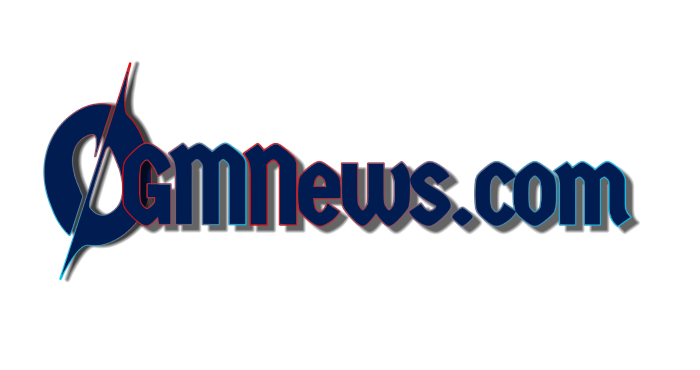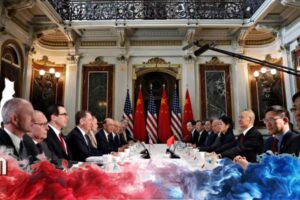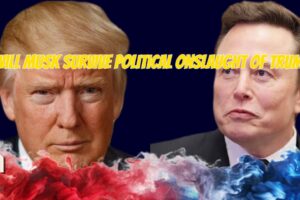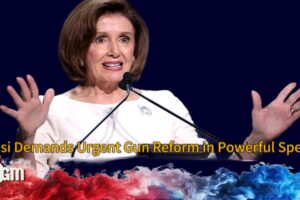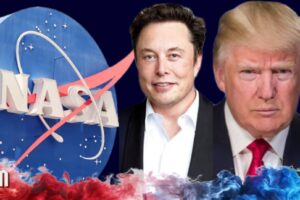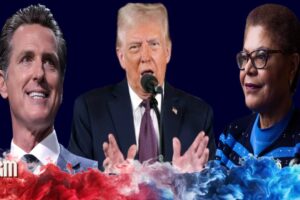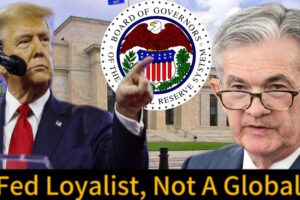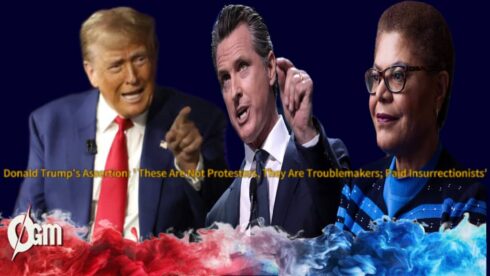Donald Trump ignited a political firestorm with a scathing tweet targeting California Governor Gavin Newsom and Los Angeles Mayor Karen Bass, demanding they apologize to citizens for their “absolutely horrible job.” In his message, Trump stated unequivocally, “These are not protesters, they are troublemakers and paid insurrectionists.” His assertion paints a grim picture of the Los Angeles unrest and directly accuses local leadership of negligence and mismanagement.
The president’s tweet also carried an ominous punctuation: “Remember. No Mask.” This cryptic remark—either a literal rejection of COVID-era mandates or a metaphor for hidden agendas—fueled speculation. Donald Trump’s comments have since gone viral, drawing both fierce criticism and passionate support across political lines, signaling that the Los Angeles riots are no longer just a local issue—they’re a national flashpoint.
Chaos in California: What’s Really Happening in Los Angeles?
As Donald Trump calls attention to the turmoil in Los Angeles, questions arise about the true nature of the ongoing riots. While mainstream media outlets have labeled them “protests,” multiple unverified videos show organized vandalism, looting, and coordinated chaos across the city. Businesses from Melrose Avenue to Hollywood Boulevard have been shuttered or ransacked.
Residents have expressed fear and frustration, claiming that police response has been either delayed or underwhelming. The line between civil protest and orchestrated violence has blurred, leaving Angelinos uncertain about their safety. Many now ask: are these truly expressions of outrage, or are they manipulated flashpoints driven by political motives?
Paid Insurrectionists or Misunderstood Protesters?
Donald Trump’s claim that the rioters are “paid insurrectionists” has reignited debates over who is truly behind the unrest. While no concrete evidence has been presented, social media threads and independent journalists have highlighted suspiciously well-organized groups arriving in caravans, donning matching gear, and using encrypted messaging apps to coordinate movements.
Local officials, however, continue to assert that the protests are organic reactions to systemic injustices and police misconduct. But critics argue that this narrative conveniently ignores the mounting evidence of outside influence and possible funding. The truth, obscured by ideology and bias, remains a battleground in the digital information war.
OGMNews.COM
Donald Trump’s Assertion: ‘ These Are Not Protesters, They Are Troublemakers; Paid Insurrectionists’
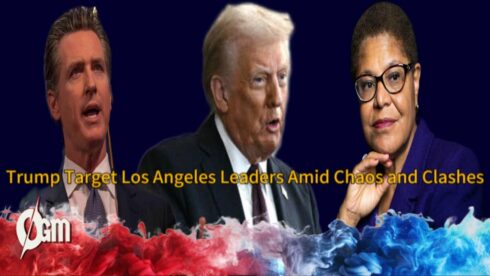
Following Donald Trump’s scathing remarks, both Governor Newsom and Mayor Bass issued carefully worded responses—but neither offered an apology. Newsom called Trump’s tweet “dangerous rhetoric,” while Bass insisted that “our city is working diligently to restore peace.” Their reluctance to acknowledge any fault only added fuel to the fire, validating Trump’s accusation in the eyes of his supporters.
Political analysts observe that both officials are walking a tightrope: appeasing their progressive base while addressing the concerns of an increasingly anxious public. However, Trump’s callout has undeniably placed them in the national spotlight, and their political futures may hinge on how they navigate this crisis.
The Role of Social Media in Amplifying the Unrest
Social media has been both a witness and a weapon in the Los Angeles riots. Donald Trump’s tweet exemplifies how a single message can escalate national tensions. Within hours, hashtags like #LAriots, #NewsomFailed, and #NoMask began trending on X (formerly Twitter), fueling speculation, conspiracy theories, and outrage.
Video clips—often out of context—spread like wildfire, further muddling the narrative. Influencers, activists, and political figures used the chaos to either discredit or bolster their ideological positions. The information war unfolding online has created echo chambers, leaving many Americans confused about what is fact, fiction, or flat-out propaganda.
What Comes Next? A City at the Crossroads
With Donald Trump raising the stakes and the city teetering on the edge of sustained civil unrest, the question now is: what happens next for Los Angeles? Calls for National Guard deployment are growing louder, especially from conservative circles. Meanwhile, activists warn that militarizing the response could worsen the situation.
Donald Trump’s intervention has forced an uncomfortable truth into the spotlight: leadership at all levels must confront the reality on the ground. Whether they will admit failures or double down on their narratives remains to be seen. But for Los Angeles, the days ahead could mark a turning point—either toward healing or deeper division.
